
My last PhD paper is (finally) out: bmcecolevol.biomedcentral.com/articles/10.11…
@BMC_series
In this #openaccess jam, we look at the idea of convergent #evolution between the #thylacine and the 'usual suspects' - the #wolf or dog
THREAD > 1/18
@BMC_series
In this #openaccess jam, we look at the idea of convergent #evolution between the #thylacine and the 'usual suspects' - the #wolf or dog
THREAD > 1/18
One of the most obvious aspects of the thylacine is that they don't really look much like any marsupial living today.
They do, however, look a lot like placental canids (wolves, dogs & relatives).
So much so that they are sometimes known as the 'marsupial wolf'!
🎨: Carl Buell
They do, however, look a lot like placental canids (wolves, dogs & relatives).
So much so that they are sometimes known as the 'marsupial wolf'!
🎨: Carl Buell

The resemblance to canids means that the thylacine is a classic example of convergent evolution, where unrelated lineages independently evolve similar features.
Examples are all around: bats & birds, whales & fish, and crab.
3/18
Examples are all around: bats & birds, whales & fish, and crab.
3/18
Convergent evolution can be a powerful tool for scientists, especially if you are studying an extinct animal.
If a #fossil animal has many of the same features as an unrelated living one, we can assume they are responses to similar evolutionary pressures.
4/18
If a #fossil animal has many of the same features as an unrelated living one, we can assume they are responses to similar evolutionary pressures.
4/18
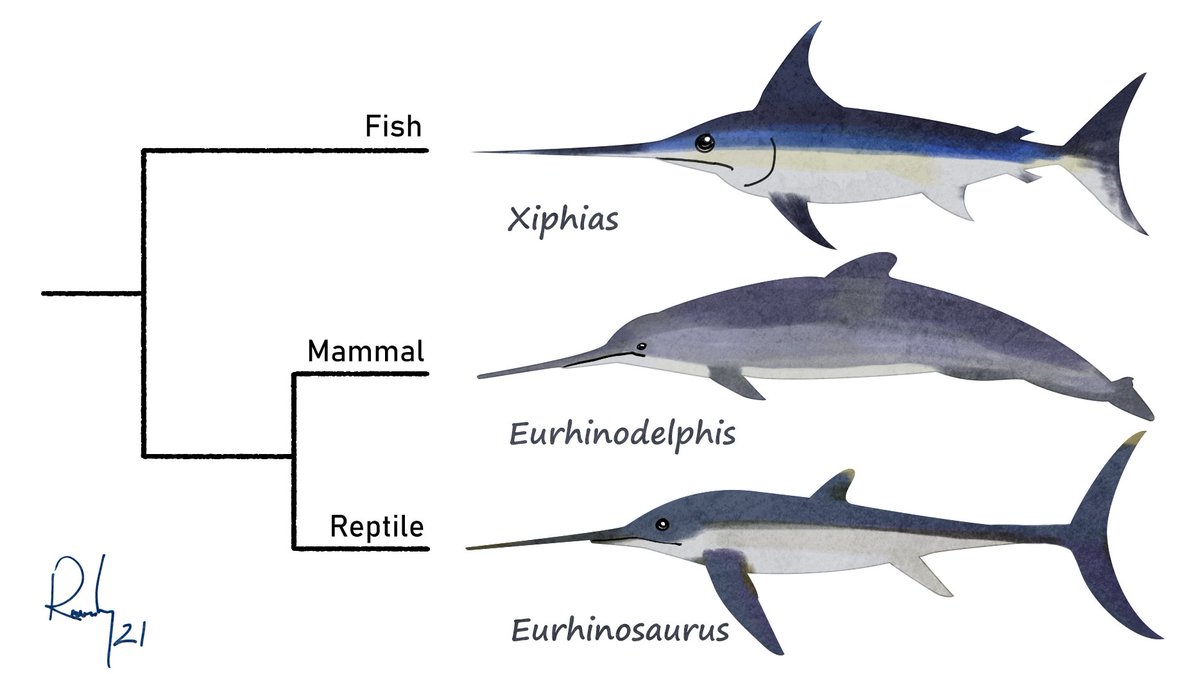
This lets us infer the niche of some extinct animals, since we can assume that these similarities mean they probably filled a similar ecological niche.
Helpful for the thylacine, since we don't have any real observational data for them - only anecdotes & captive notes!
5/18
Helpful for the thylacine, since we don't have any real observational data for them - only anecdotes & captive notes!
5/18
Since the thylacine has long been thought of as a marsupial wolf/dog, its ecological niche has often been assumed to the similar to that of those animals.
But what if that was wrong?
6/18
But what if that was wrong?
6/18
One of the issues is what does it mean to be similar to a dog? What IS a dog?
The thylacine has often been compared to the gray wolf or dingo/domestic dog, but these are ecologically distinct within canids.
Canids are actually very diverse & disparate, with < 35 species!
7/18
The thylacine has often been compared to the gray wolf or dingo/domestic dog, but these are ecologically distinct within canids.
Canids are actually very diverse & disparate, with < 35 species!
7/18

Also, there is the problem of just how convergent is 'enough'? Convergence can be pretty damn close... or it can be just in the ballpark.
What was the case with the thylacine; where did it really fit, how closely, and with whom?
8/18
What was the case with the thylacine; where did it really fit, how closely, and with whom?
8/18
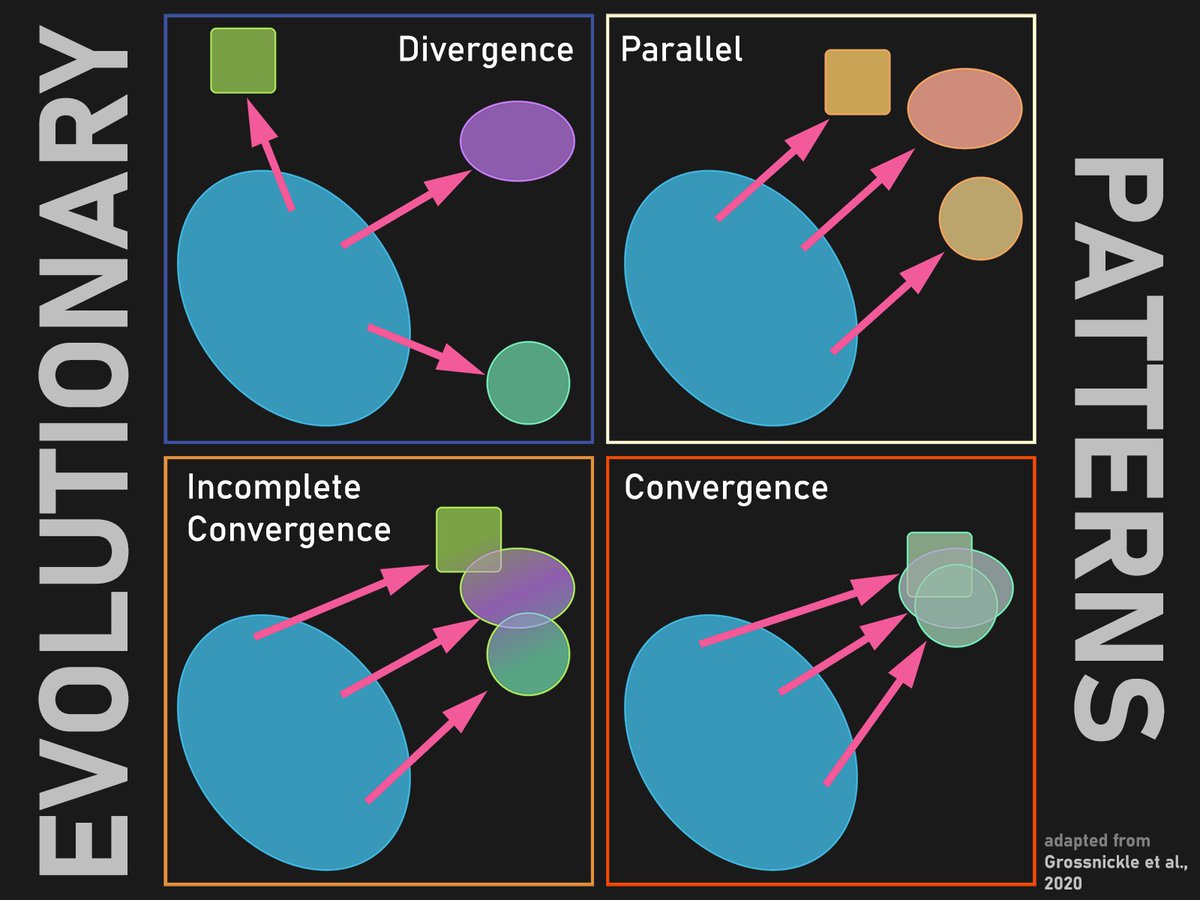
So, I took an @Artec3DScanners scanner around to over a dozen institutions around the world to get samples to compare with the thylacine.
Since I was interested in the predatory niche of the thylacine, I scanned a bunch of heads.
Hundreds of 'em.
9/n
Since I was interested in the predatory niche of the thylacine, I scanned a bunch of heads.
Hundreds of 'em.
9/n

I focused on animals that were ecologically-meaningful to the question. That meant animal-eating (faunivorous) mammals, that were not too big & not too small.
I also gathered up ecologic information: diet, prey size, and body mass. I had to understand all the comparatives!
10/18
I also gathered up ecologic information: diet, prey size, and body mass. I had to understand all the comparatives!
10/18

I sampled the shapes of the skulls with 3D geometric morphometrics, which lets you collect shape data in 3D!
The face (bitey bit) & neurocranium (muscles & brain) were important areas to look at, so I made a protocol that would cover those for both placentals & marsupials.
11/18
The face (bitey bit) & neurocranium (muscles & brain) were important areas to look at, so I made a protocol that would cover those for both placentals & marsupials.
11/18
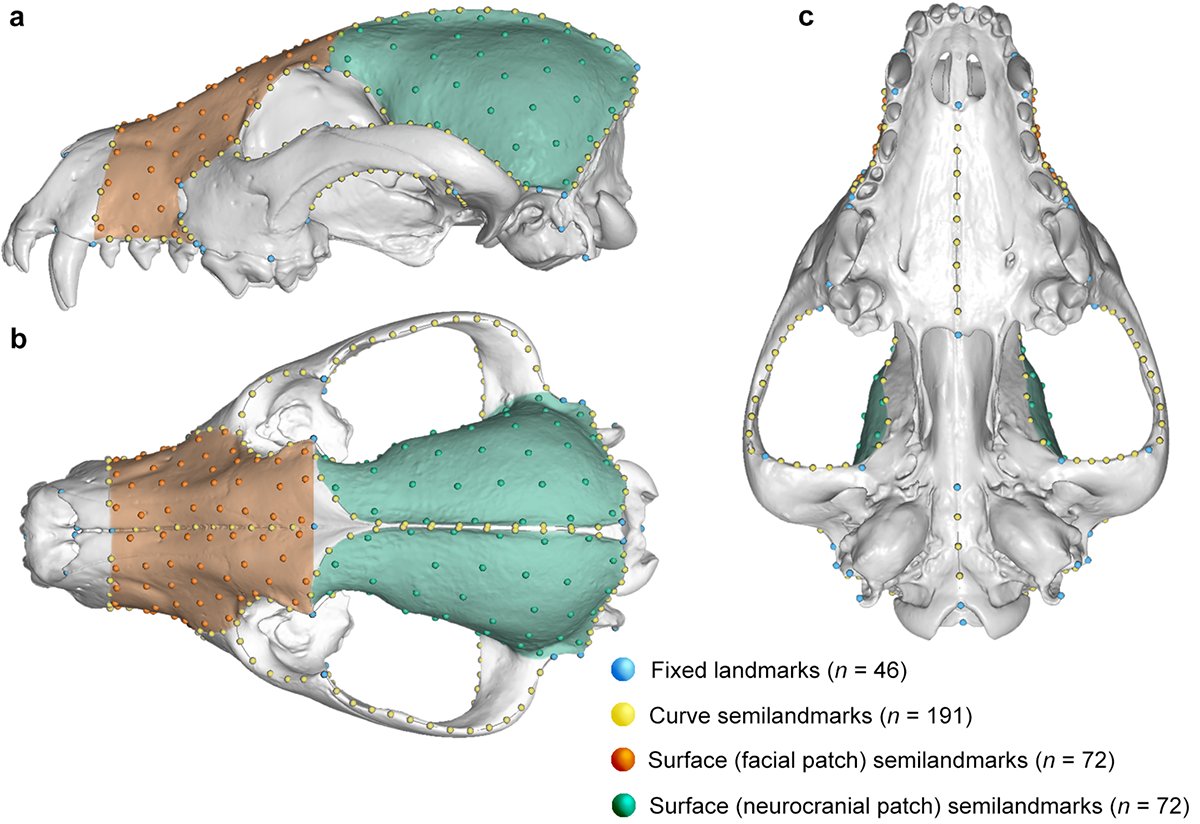
With all this, I could drop the thylacine in and compare it to these known shapes, and see what that told me about the ecology.
I also used two tests of convergent evolution - using two different tests let me 'triangulate' a precise answer where the results overlapped.
12/18
I also used two tests of convergent evolution - using two different tests let me 'triangulate' a precise answer where the results overlapped.
12/18

So, here's where the thylacine fits within all these bitey critters.
You can see that the shapeworld of anger-faced animals is basically divided into danger-cats 🐱 and snippy-snap-dogs 🐶. Including the marsupials!
Now then, is the thylacine convergent with anyone?
13/18
You can see that the shapeworld of anger-faced animals is basically divided into danger-cats 🐱 and snippy-snap-dogs 🐶. Including the marsupials!
Now then, is the thylacine convergent with anyone?
13/18

YES! But NOT with the 'usual suspects'!
We find little to no significant convergence with the wolf, dingo, or red fox. 🤯
We DO find strong signals of convergence with 4 other canids - all of which are ecologically very different than the wolf/dog group.
14/18
We find little to no significant convergence with the wolf, dingo, or red fox. 🤯
We DO find strong signals of convergence with 4 other canids - all of which are ecologically very different than the wolf/dog group.
14/18
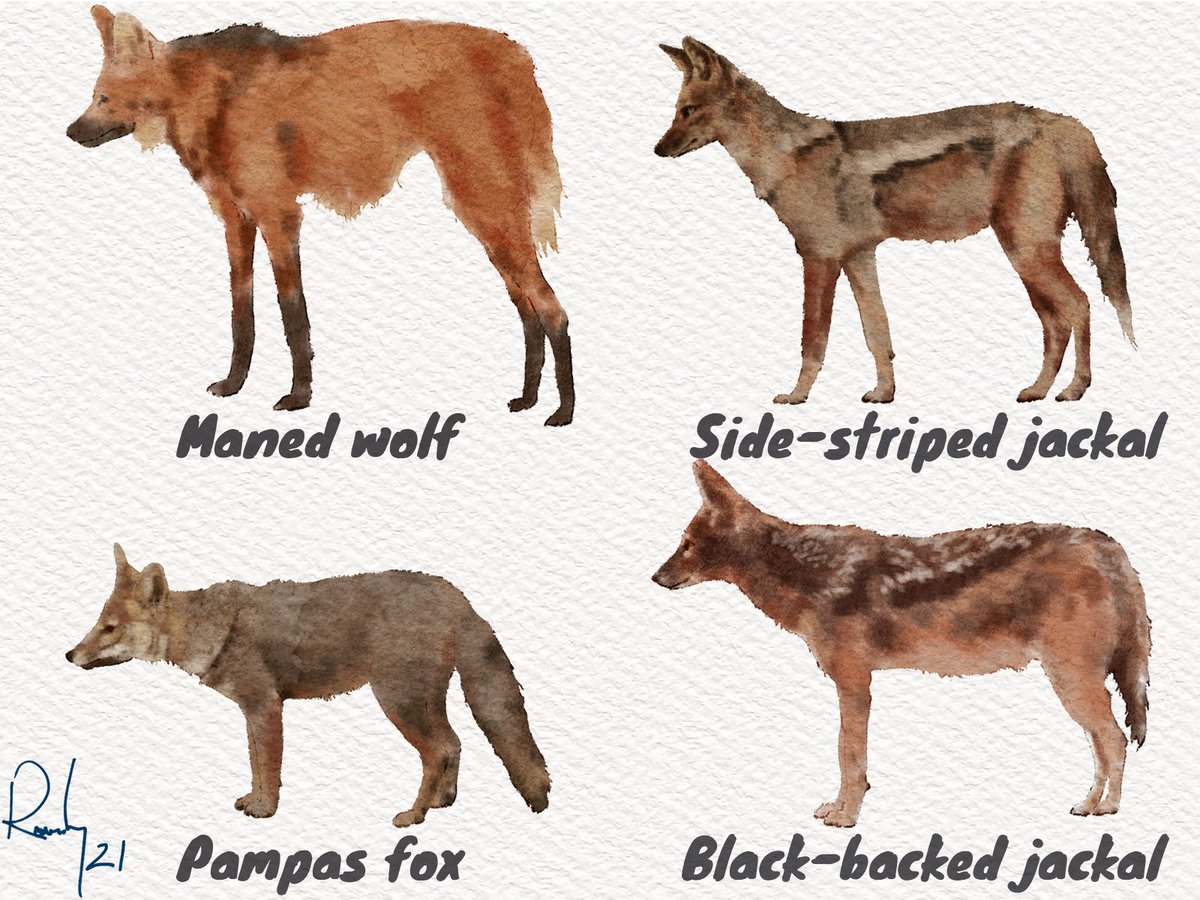
These canids all specialise on hunting prey much smaller than themselves.
When we compare their skulls to that of the wolf or thylacine, we can see that they are much more like the thylacine skull than the wolf's is, especially in the bitey area of the face!
15/18
When we compare their skulls to that of the wolf or thylacine, we can see that they are much more like the thylacine skull than the wolf's is, especially in the bitey area of the face!
15/18
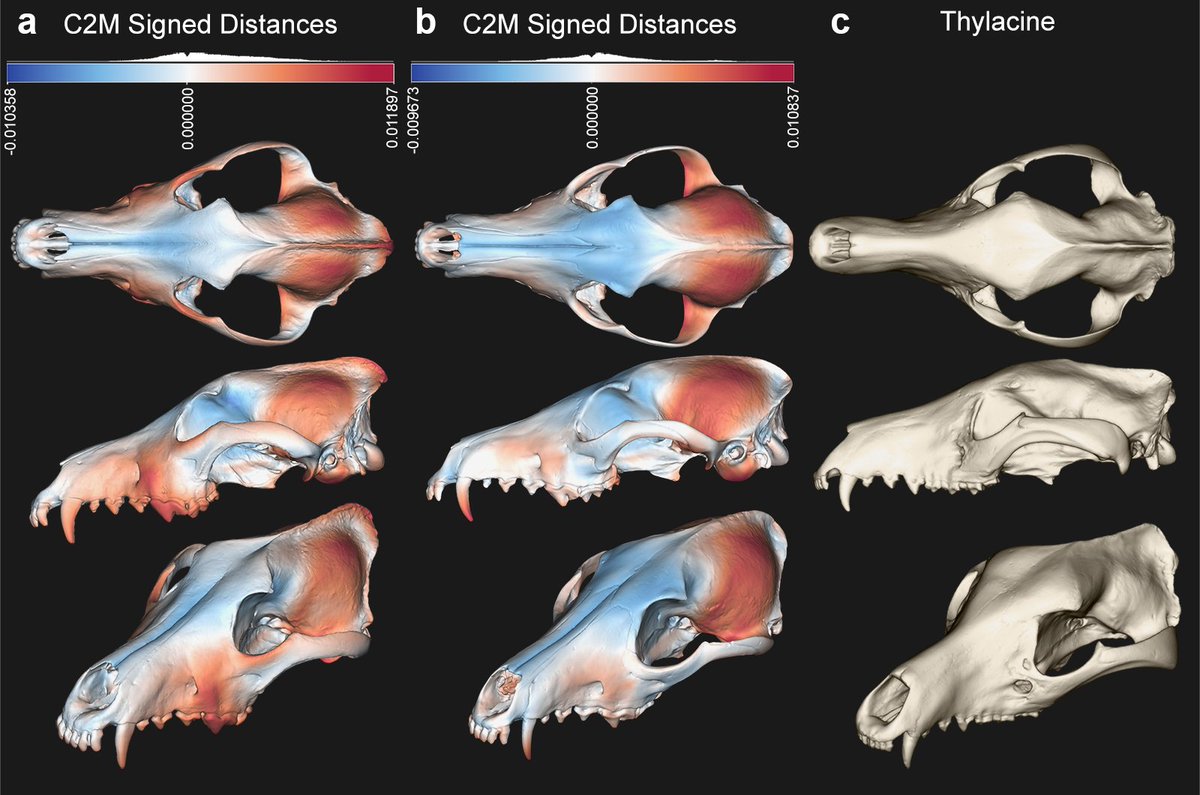
We also find a small but very significant correlation with skull shape & prey size, which again points to this same idea:
The thylacine probably hunted relatively small prey, & was probably occupying a very different ecological niche than the wolf/dog comparatives.
16/18
The thylacine probably hunted relatively small prey, & was probably occupying a very different ecological niche than the wolf/dog comparatives.
16/18
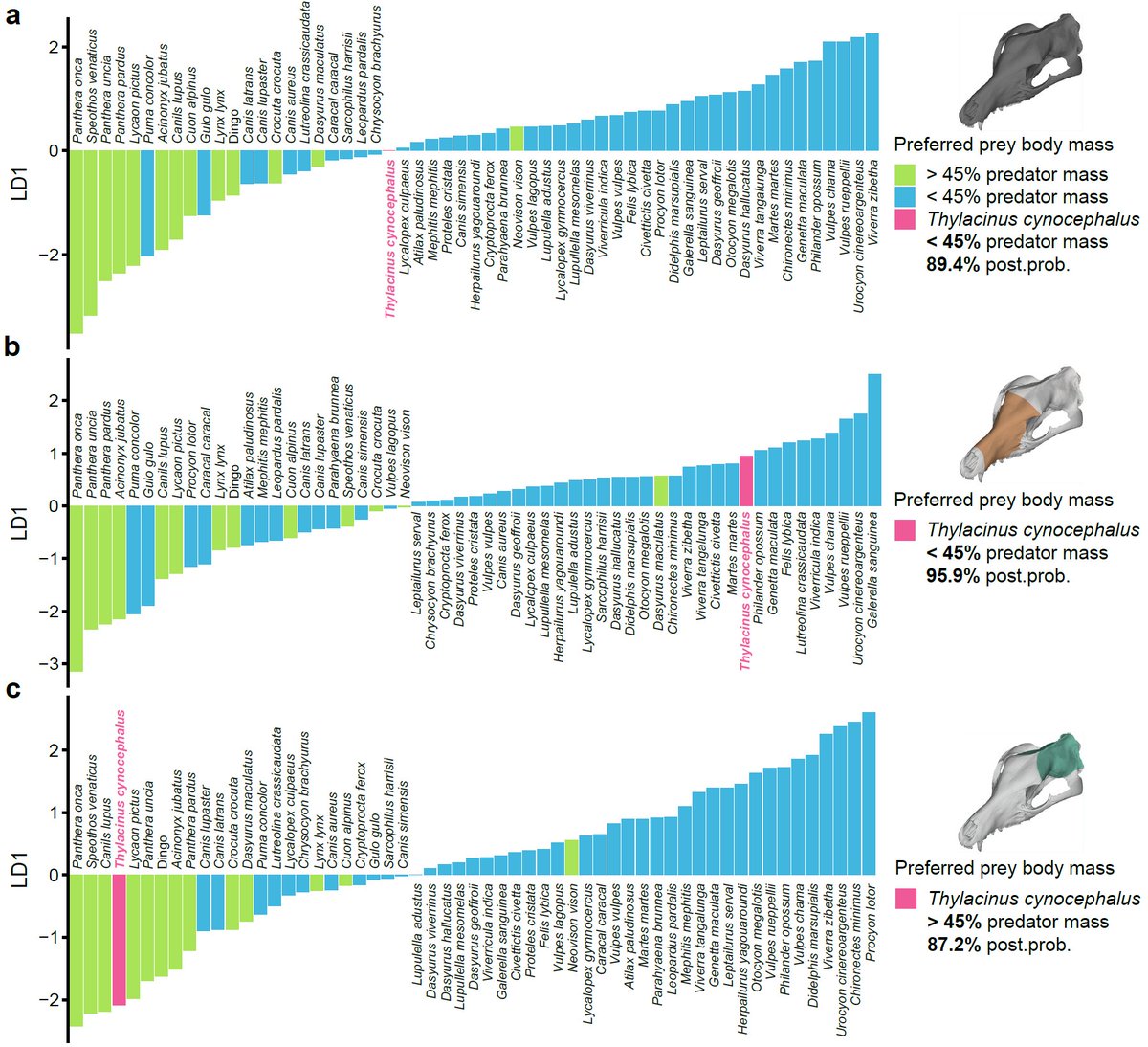
All this points to needing to be careful & critical in what your input data is when you are trying to infer the ecology of an extinct animal.
Birds & bats might be convergent, but there is a LOT of variation there; microbats are not very ecologically similar to ostriches !
17/18
Birds & bats might be convergent, but there is a LOT of variation there; microbats are not very ecologically similar to ostriches !
17/18
And the #thylacine, imporantly, did not completely overlap with ANY comparative, canid, marsupial or otherwise.
It was likely ecologically rather distinct, and different from any of the comparatives, regardless of convergence.
And it certainly wasn't a marsupial wolf.
18/18
It was likely ecologically rather distinct, and different from any of the comparatives, regardless of convergence.
And it certainly wasn't a marsupial wolf.
18/18

• • •
Missing some Tweet in this thread? You can try to
force a refresh


